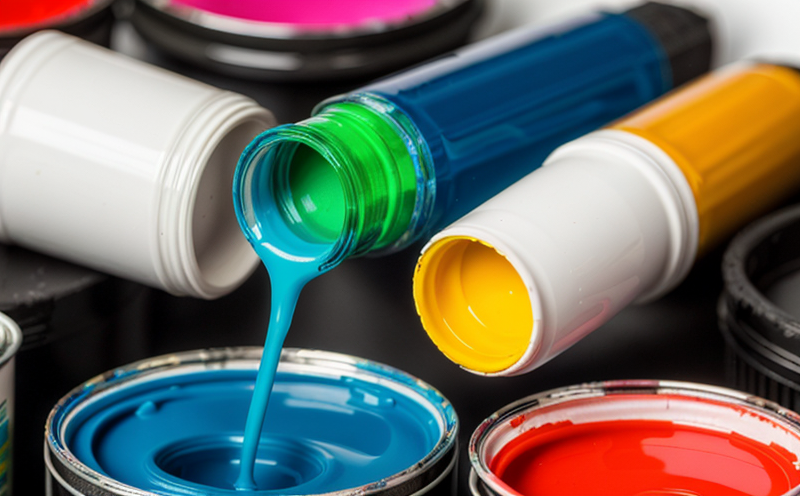DIN 53230 Corrosion Resistance of Paints with Nanomaterial Additives
In today's rapidly evolving materials science sector, nanomaterials have been increasingly incorporated into paints and coatings to enhance their properties. One key challenge in this area is ensuring that these nanomaterials do not compromise the essential characteristics of the paint or coating, such as its corrosion resistance.
The DIN 53230 standard provides a stringent method for assessing the corrosion resistance of paints containing nanomaterial additives. This test protocol allows manufacturers and quality managers to verify that their products meet the required performance standards before they reach the market. The process involves subjecting samples to controlled environments designed to simulate real-world conditions, thereby ensuring reliability and consistency.
The testing procedure is intricate and includes multiple steps aimed at replicating various types of corrosion stress that paints might encounter during use. These include exposure to salt spray, humidity, UV radiation, and other environmental factors known to induce degradation in paint films. By following this rigorous protocol, laboratories can provide accurate data on how well nanomaterials perform within the context of a paint's overall performance.
For quality managers, compliance officers, R&D engineers, and procurement professionals involved in developing or sourcing paints with nanomaterial additives, understanding DIN 53230 is crucial. This standard ensures that all parties are working towards consistent benchmarks for evaluating corrosion resistance, which ultimately contributes to higher product quality and customer satisfaction.
Test Procedure Overview
The test procedure begins by preparing the paint samples according to specified guidelines outlined in DIN 53230. This involves applying the nanomaterial-containing paints onto substrates under controlled conditions, allowing them to dry completely before proceeding with further steps.
Following drying, the samples are subjected to accelerated corrosion tests designed to mimic actual usage scenarios. These tests may involve immersion in salt water solutions or exposure to UV light sources capable of simulating prolonged sunlight exposure. Throughout these processes, detailed observations are made regarding any signs of degradation such as blistering, cracking, or loss of adhesion.
After completion of the test period, the samples undergo visual inspections and measurements using precise instruments like micrometers and thickness gauges to quantify changes in film thickness and integrity. Any deviations from initial conditions are recorded meticulously for subsequent analysis.
Why It Matters
- Ensures product reliability and longevity
- Aids in meeting regulatory requirements and industry standards
- Supports continuous improvement through data-driven insights
- Promotes trust among consumers who value high-quality products
- Facilitates compliance with international guidelines for sustainable practices
Applied Standards
| Standard | Description |
|---|---|
| DIN 53230 | This German standard specifies the procedure for determining the resistance of paints containing nanomaterials to corrosion caused by exposure to salt spray, humidity, and UV radiation. |
| ISO 14619-2 | International standard that covers general requirements for the preparation, conditioning, and testing of metallic substrates before painting. |
| ASTM D3780 | American Society for Testing Materials standard covering procedures for measuring resistance to salt spray (Fog) corrosion of coated metals by exposure under controlled conditions. |
Benefits
- Promotes adherence to international quality standards
- Enhances brand reputation through consistent performance metrics
- Maintains regulatory compliance and reduces potential liabilities
- Facilitates informed decision-making across supply chain partners
- Encourages innovation by highlighting areas for improvement
- Cost savings resulting from reduced warranty claims and recalls.
- Increased market share due to superior product performance.
- Enhanced reputation among stakeholders, including customers, investors, and regulatory bodies.





